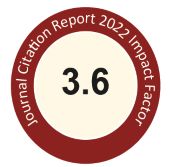Abstract
As a classic herb pair, Astragali Radix-Carthami Flos (AR-CF) has revealed good biological activity in the treatment of cerebral ischemia/reperfusion injury (CI/RI), which remained to be further clarified together with the underlying efficacy related compounds for material basis. In this study, the nine formulations were obtained by L9(34) orthogonal array design of four active fractions (saponin and flavonoid extracted from AR, safflower yellow and safflower red extracted from CF). The concentrations of eleven components and the levels of four biochemical indicators in rat plasma were continuously detected after intragastric administration of nine formulations, respectively. The collected data were analyzed by sigmoid-Emax function to understand the polypharmacokinetics and pharmacodynamics (PK-PD) behaviors of multi-components. Using the total quantum statistic moment polypharmacokinetics and its similarity method, the importance of four active fractions from AR-CF in relieving CI/RI was discussed and the Q-markers were screened. The results represented that a reliable and robust liquid chromatography tandem mass spectrometry method been successfully established to simultaneously determine the concentrations of eleven components in rat plasma. The AUC and MRT values of components from flavonoid fraction had the greatest contribution to AUCT and MRTT values. The transitivity in vivo of calycosin‐7‐O‐β‐D‐glucoside (CG), astragaloside IV (AIV) and hydroxysafflor yellow A (HYA) was closer to polypharmacokinetics behavior. All formulations up/down-regulated the levels of GSH-Px and ATP/ET and LDH to varying degrees, among which formulation 7 had the best regulating effect. By drawing the time-concentration-effect curve, clockwise hysteresis loops were presented in the time-concentration-effect relationships between eleven components and LDH/ET, while the relationship between eleven components and ATP/GSH-Px expressed as anticlockwise hysteresis loops. In conclusion, the combination based on the combination principle of formulation 7 produced the best alleviation effect on CI/RI, and flavonoid fraction might played key role in this process. The CG, AIV and HYA were identified as Q-markers. This research offered a novel strategy for exploring the active substances, and provided further understanding regarding the development of drugs for the treatment of cerebral ischemia-reperfusion injury.
Recommended Citation
Zeng, Qiang; Li, Chang; Xu, Shouchao; and He, Yu
(2023)
"An integrated strategy to evaluate active substances of Astragali Radix-Carthami Flos combination on the treatment of cerebral ischemia reperfusion injury based on TQSM polypharmacokinetics and pharmacodynamics,"
Journal of Food and Drug Analysis: Vol. 31
:
Iss.
4
, Article 11.
Available at: https://doi.org/10.38212/2224-6614.3477
Creative Commons License

This work is licensed under a Creative Commons Attribution-Noncommercial-No Derivative Works 4.0 License.
Included in
Food Science Commons, Medicinal Chemistry and Pharmaceutics Commons, Pharmacology Commons, Toxicology Commons


Abstract Image